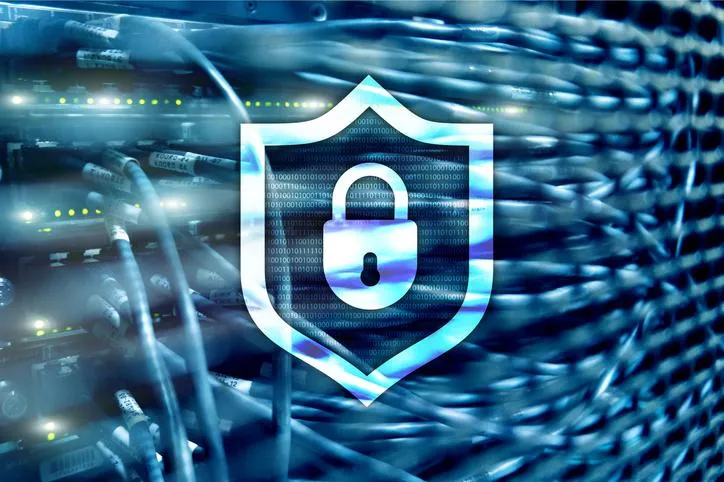Blog
Business IT articles and News

What Does Data Security Mean?
"A Breach Alone Is Not A Disaster, But Mishandling It Is." - Serene Davis
Introduction:
Data security is an important concept for anyone who stores or works with data. It is the practice of keeping digital information safe and secure from unauthorized access, use, destruction, or modification. With so much of our lives becoming increasingly digitalized, data security is a necessary measure to protect our online identities, financial information, and other sensitive data. In this blog post, we will cover the basics of data security and discuss how you can protect your information.
What is Data Security?
Data security refers to the measures taken to protect digital information from unauthorized access, use, disclosure, disruption, modification, or destruction. In today's technology-driven world, data security has become a critical concern for individuals, businesses, and organizations alike.
Data security encompasses various processes and techniques aimed at ensuring the confidentiality, integrity, and availability of data. This means that data should only be accessible to authorized individuals or systems, it should be accurate and unaltered, and it should be available whenever it is needed.
For businesses, data security is of utmost importance. A breach in data security can have severe consequences, including financial losses, damage to reputation, legal liabilities, and loss of customer trust. It is essential for businesses to establish robust data security measures to safeguard sensitive information such as customer data, intellectual property, financial records, and trade secrets.
Data security involves implementing various security measures, including strong passwords, encryption, firewalls, access controls, regular backups, and secure networks. It also involves employee education and awareness to prevent social engineering attacks and the safe handling of data.
For Information on How Nerd Nation IT can help With Data Security Click Here.
The Importance of Data Security
Data security is of utmost importance in today's digital age. With the rapid growth of technology and the increasing amount of data being generated and stored, the need to protect this information has become critical. Data security refers to the measures and protocols implemented to safeguard data from unauthorized access, alteration, and destruction.
The importance of data security cannot be overstated. Data breaches can have severe consequences for individuals and organizations alike. For individuals, data breaches can lead to identity theft, financial loss, and personal reputation damage. For organizations, data breaches can result in significant financial loss, legal consequences, damage to brand reputation, and loss of customer trust.
Additionally, data security plays a crucial role in compliance with regulations and industry standards. Many industries have specific regulations in place to ensure the protection of sensitive data, such as personal identifiable information (PII) or healthcare information (HIPAA). Failing to adhere to these regulations can result in hefty fines and legal penalties.
Furthermore, data security is essential for maintaining business continuity. Loss or compromise of critical data can disrupt operations and lead to significant downtime, impacting productivity and revenue.
To ensure the importance of data security, organizations must implement robust security measures, including encryption, strong authentication, regular data backups, and employee training. By prioritizing data security, individuals and organizations can mitigate risks, protect sensitive information, and maintain trust and credibility in an increasingly interconnected digital world.

Common Threats to Data Security
In today's digital age, the threats to data security have become increasingly sophisticated and prevalent. It is crucial for individuals and organizations to be aware of these common threats in order to protect their valuable information.
One of the most common threats is malware, which refers to malicious software that is designed to gain unauthorized access or damage computer systems. This can come in the form of viruses, worms, trojans, or ransomware. Malware can infiltrate systems through various means such as phishing emails, infected websites, or downloading unauthorized software.
Another threat is unauthorized access, where individuals or entities gain access to sensitive data without proper authorization. This can happen through weak passwords, stolen credentials, or exploiting vulnerabilities in security systems. Unauthorized access can lead to data breaches, identity theft, or financial fraud.
Social engineering is another significant threat to data security. This involves manipulating individuals into divulging confidential information or performing actions that can compromise data security. Phishing attacks, impersonation, and baiting are some common examples of social engineering tactics.
Data breaches, whether through external attacks or internal negligence, pose a major threat to data security. This can result in the exposure of sensitive information such as personal records, financial data, or trade secrets. The consequences of a data breach can be severe, including reputational damage, legal repercussions, and financial losses.
It is important to stay informed about these common threats to data security and take proactive measures to mitigate the risks. Implementing strong security measures, such as using robust antivirus software, regularly updating software and systems, practicing good password hygiene, and educating users about potential threats can help safeguard against these threats. By being vigilant and proactive, individuals and organizations can significantly reduce the risk of falling victim to these common threats and protect their valuable information.
Best Practices for Protecting Data

Data security is crucial for organizations and individuals who store and handle sensitive information. Here are some best practices to help protect your data:
1. Use Strong Passwords: Passwords should be complex, consisting of upper and lowercase letters, numbers, and special characters. Avoid using easily guessable information such as your name or date of birth.
2. Regularly Update Software: Software updates often contain security patches that protect against known vulnerabilities. Keep all software up to date, including antivirus and firewall software.
3. Implement Encryption: Encryption helps to protect data by converting it into a coded form that can only be accessed with a key or password. Implement encryption for sensitive information such as financial records or personal data.
4. Limit Access: Only allow access to sensitive data to those who need it. Use access controls and permissions to limit access and monitor who has access to what information.
5. Back up Data Regularly: Regular backups ensure that data can be recovered in the event of a breach or data loss. Store backups securely off-site or in the cloud.
6. Educate Employees: Train employees on data security best practices and establish policies to ensure compliance.
By implementing these best practices, you can help protect your data from cyber threats and ensure the confidentiality, integrity, and availability of your information.
Data Security Technologies and Tools
As technology advances, so do the tools and technologies available for data security. Here are some of the most common ones you should be familiar with:
1. Encryption: Encryption is the process of converting data into an unreadable format. This makes it difficult for hackers to read the data even if they are able to intercept it. There are several types of encryption available, such as symmetric and asymmetric encryption.
2. Firewalls: A firewall is a security system that monitors and controls incoming and outgoing network traffic based on predetermined security rules. Firewalls are essential for preventing unauthorized access to your network.
3. Antivirus Software: Antivirus software is designed to detect, prevent, and remove malicious software from your computer or network. It is essential for protecting your devices from malware and other threats.
4. Access Control Systems: Access control systems allow you to restrict access to sensitive data and systems to only authorized users. This can be done through password protection, biometric authentication, or other methods.
5. Data Backup and Recovery: Data backup and recovery systems are designed to prevent data loss in the event of a disaster, such as a cyber attack or hardware failure. These systems automatically backup your data on a regular basis and allow you to restore it quickly in case of an emergency.
By using these data security technologies and tools, you can significantly reduce the risk of a cyber attack and protect your sensitive information.
8. It increases SEO
Search engine optimization is a vital part of any successful digital marketing campaign. A well-written blog can improve your search rankings by helping you rank higher in search engines. When someone searches for a topic related to your niche, they will often click on the first few pages of results. These are usually the websites that have the most relevant content.
If you want to get more traffic from Google and other search engines, make sure you use keywords throughout your site. This means using them in titles, headers, subtitles, and even in the body of your articles. If you do this, it will help people find what they’re looking for when they type in a keyword or phrase into their browser.
This means that regardless of what your business offers, your target audience is likely searching for products or services like yours on search engines like Google.
For Information on How Nerd Nation IT can help With Data Security Click Here.

Nerd Nation IT specializes in providing IT and Network services and solutions for small Businesses that need help with Disaster Recovery Planning. For any questions about our services for your network, give us a call at 307-296-1906.





